How can distributors generate revenue on Morpho?
Curators are generating revenue by retaining a portion of the performance of their vaults, while distributor channels have different ways to charge fees as well.
A distributor channel is any platform, application, or service that integrates Morpho's functionality to offer it to their own users. This includes wallets, DeFi aggregators, portfolio management apps, or custom interfaces that embed Morpho vaults. These distributors make Morpho accessible to users who might not otherwise directly interact with the Morpho protocol, and they can earn fees by facilitating these interactions.
To generate revenue, a distributor has two main possibilities that will be developed in the page below:
- Own its own revenue layer (an onchain contract like a Vault V2)
- Have an agreement with a curator (onchain or offchain)
Fees
Morpho Vault V2 can charge 2 types of fees, while Morpho Vault V1 has only one:
| Fees | Vault V2 | Vault V1 |
|---|---|---|
| Performance fee (taken on the native yield) | ✅ 0% → 50% | ✅ 0% → 50% |
| Management fee (taken on the Assets Under Management) | ✅ 0% → 5% | ❌ |
Architecture
Here is the setup of the current Earn architecture with USDC as an example
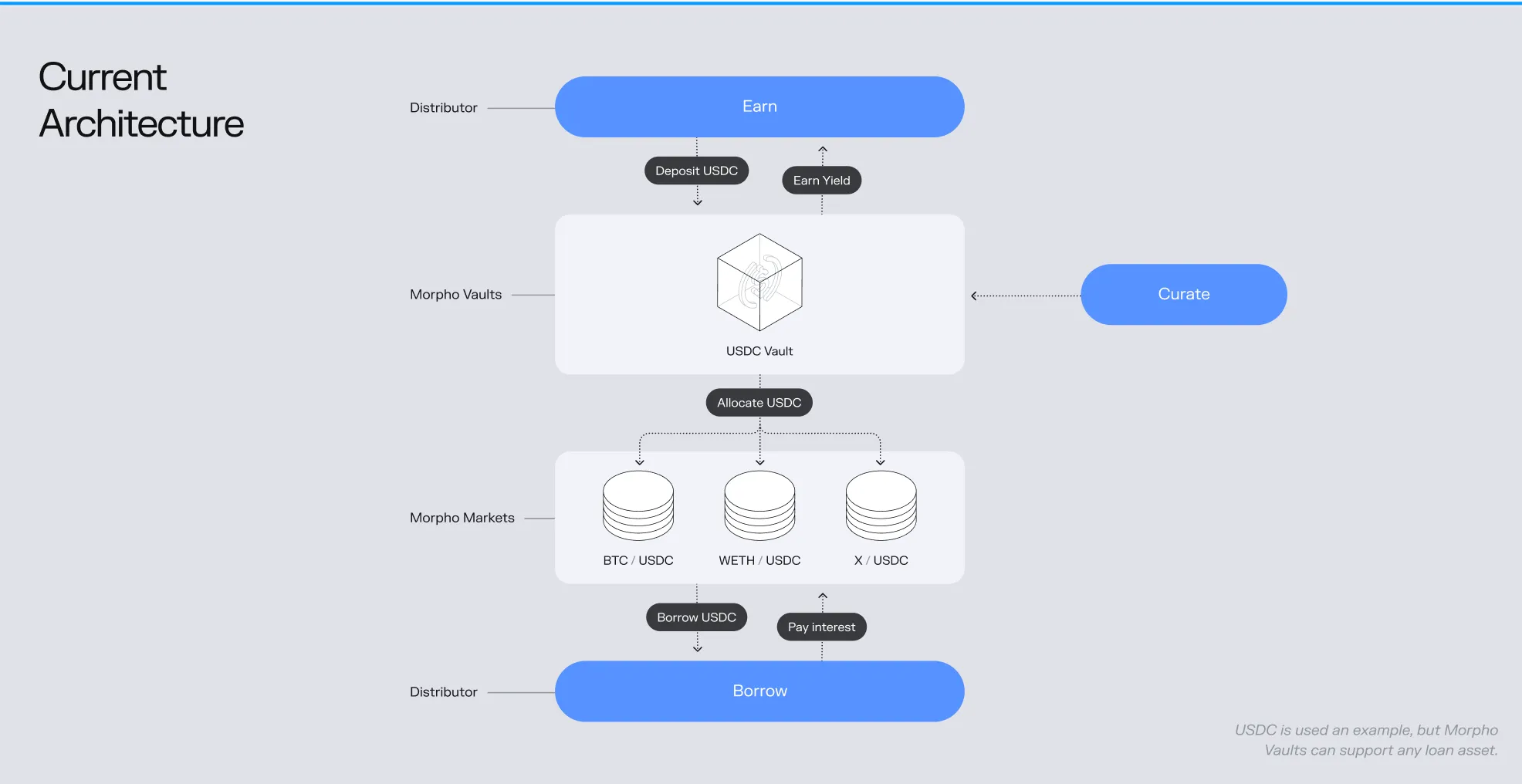
Here is the vault model illustrating asset flow in terms of allocation

Examples of possible configurations
Selection Guide
| Model | Control | Trust Required | Complexity | Best For |
|---|---|---|---|---|
| V2 Wrapper | High | None | Low | Independent distributors |
| Offchain Agreement | Shared | High | Medium | Strategic partnerships |
| Onchain Splitter | Shared | None | High | Formal trustless partnerships |
1. Vault V2 Wrapper Model
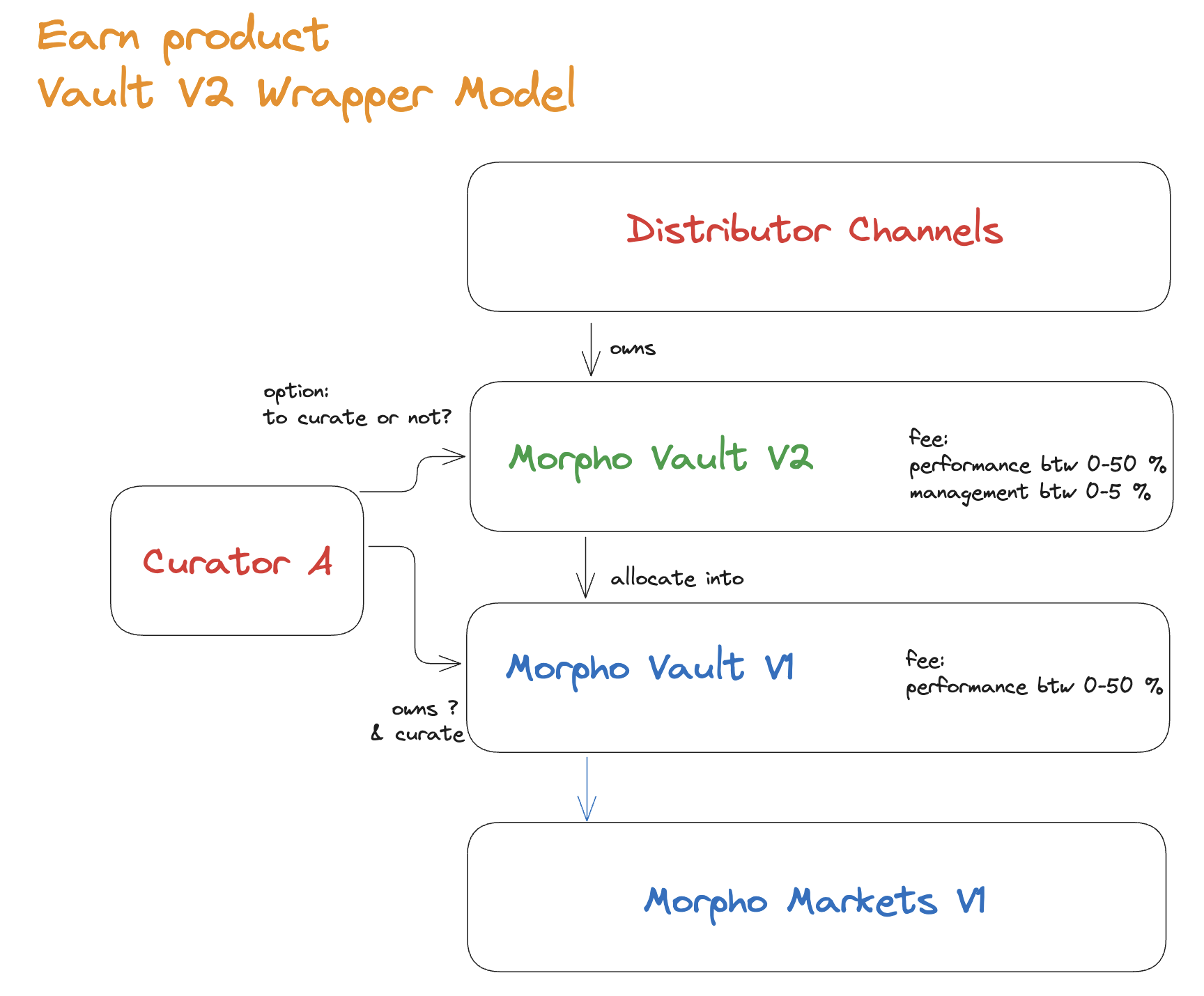
Setup: Distributor owns and operates a Vault V2 that allocates entirely into an existing Vault V1.
Fee Structure:- Vault V1 (curator-managed): Charges performance fee (0-50%)
- Vault V2 (distributor-owned): Adds management fee (0-5%) on top
- Clear onchain fee separation
- Distributor controls vault settings and branding
- No coordination required with V1 curator
Use Case: Best for distributors wanting full control over their product while leveraging established V1 vaults.
2. Offchain Agreement Model
Setup: Distributor and curator establish a legal revenue-sharing agreement for liquidity provided.
Two Options: Option A - New Dedicated Vault: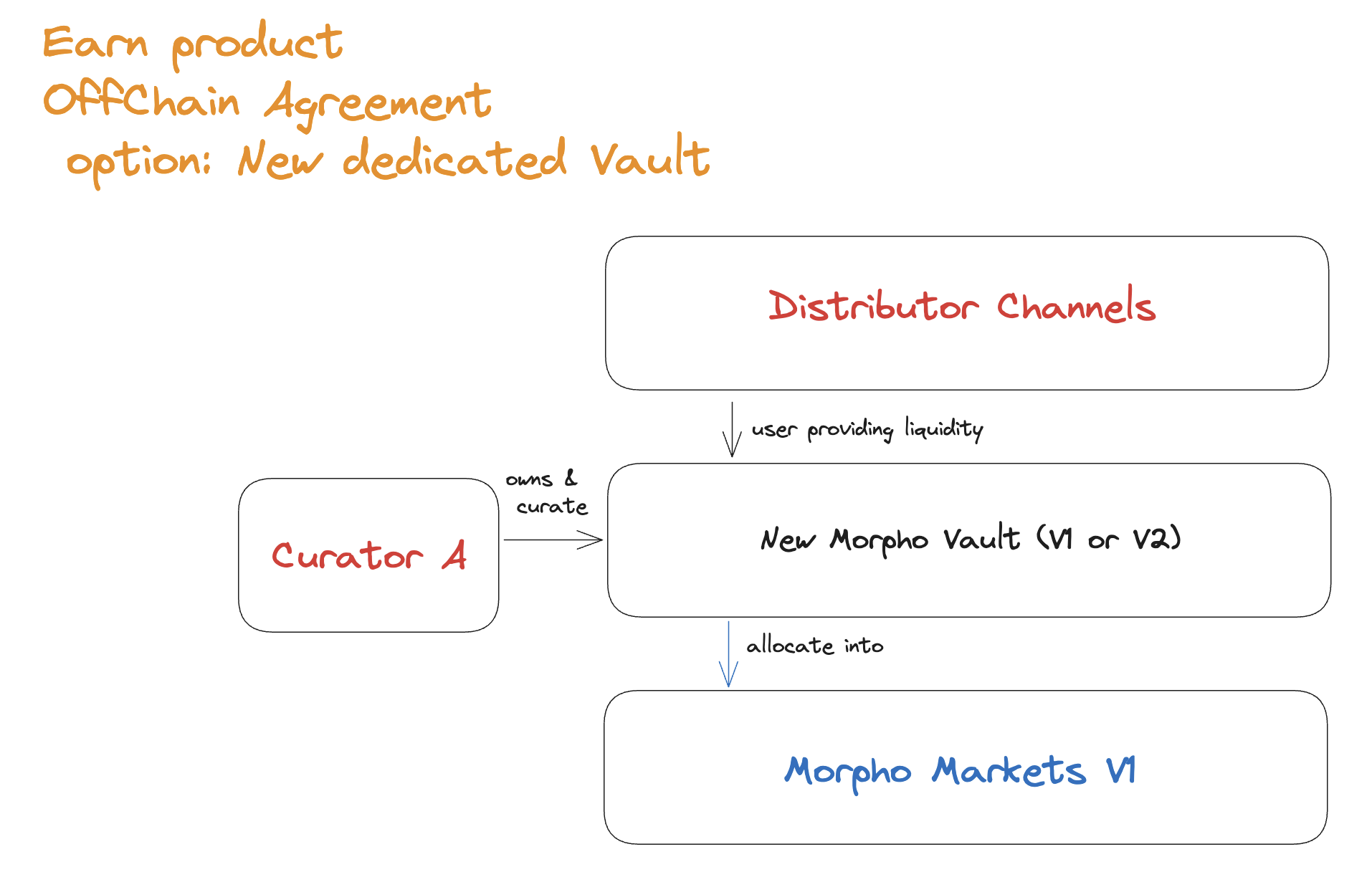
- Curator launches new vault (V1 or V2) exclusively for distributor's users
- Fee split negotiated up-front (e.g., 50/50 on performance fees)
- Clean attribution of liquidity and fees
Option B - Existing Vault:
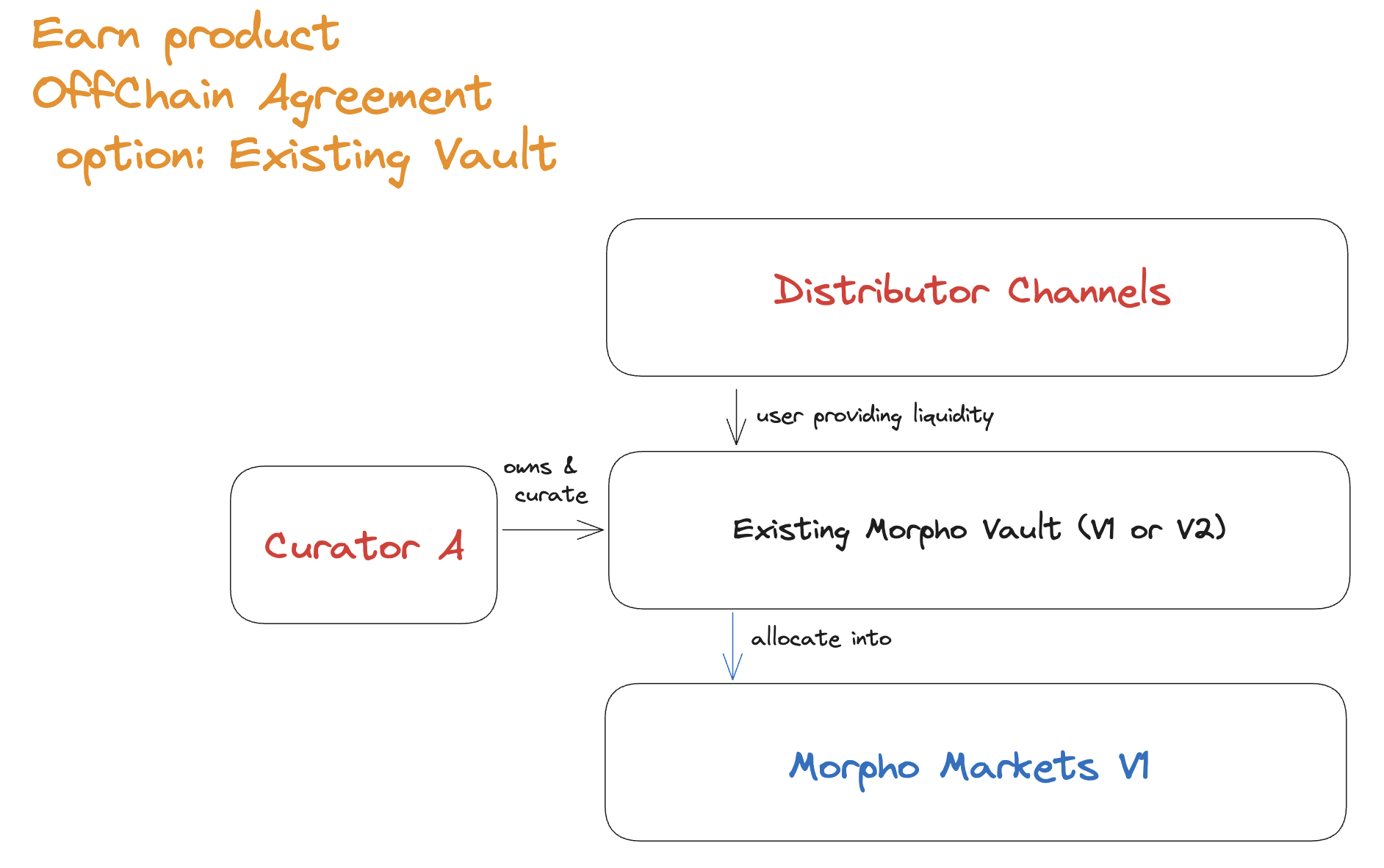
- Distributor directs users to existing vault
- Revenue share calculated based on tracked liquidity contribution
- Requires tracking mechanism (transaction mapping, user addresses, time-weighted deposits)
- Legal contract enforces agreement
- Option B requires reliable attribution system
- Settlement handled offchain (periodic payouts)
Use Case: Best for strategic partnerships where trust exists or when onchain complexity isn't warranted.
3. Onchain Splitter Contract Model
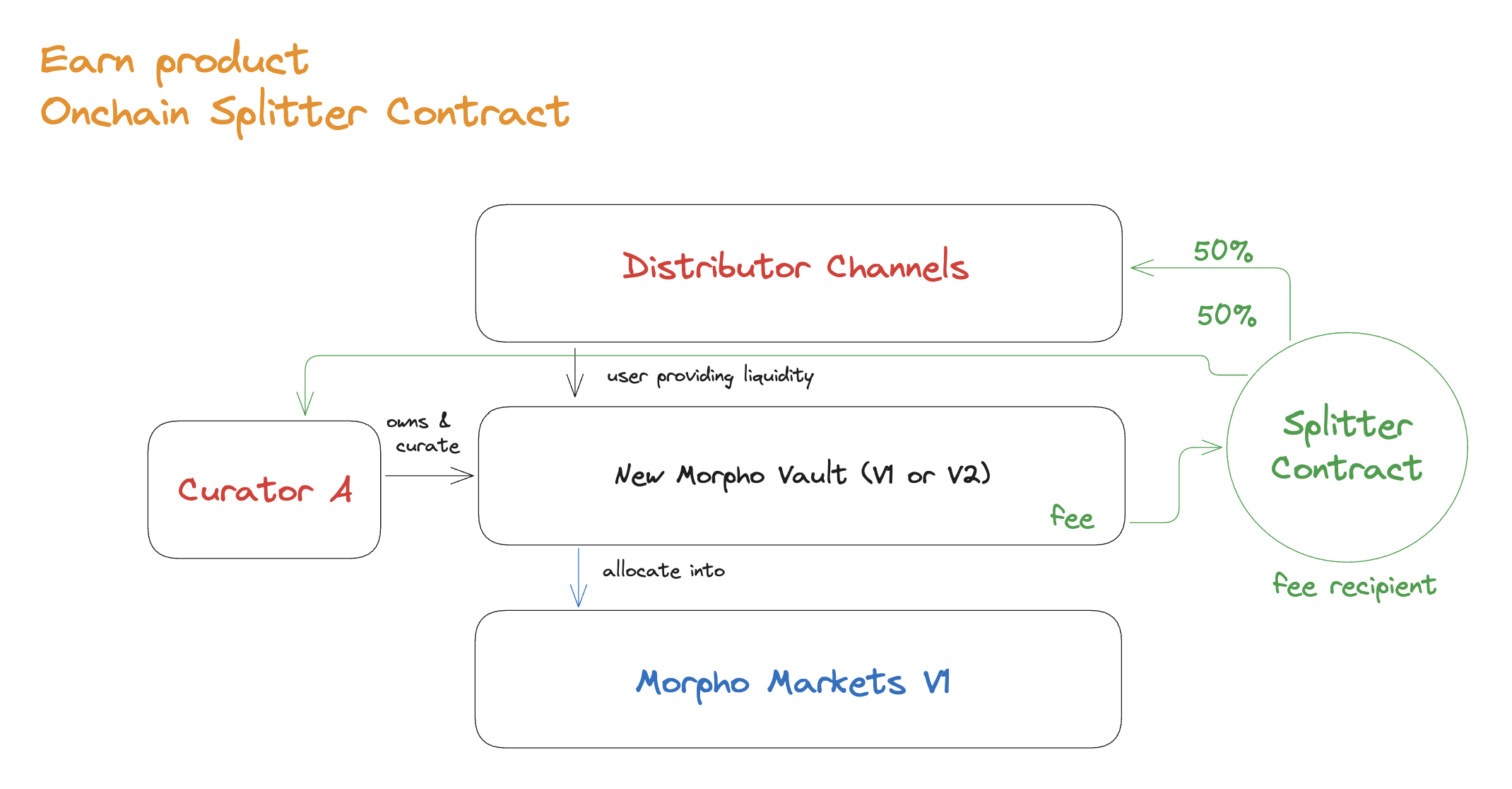
Setup: Smart contract automatically splits fees between curator and distributor based on pre-defined terms.
Requirements:- Dedicated new vault (V1 or V2) for the partnership
- Splitter contract receives fee recipient role
- Automated distribution of fees to both parties
- Vault accrues performance/management fees
- Fees sent to splitter contract
- Contract automatically distributes per agreement (e.g., 60% curator / 40% distributor, or 50/50)
- Trustless execution
- Transparent onchain tracking
- No manual settlement required
- Requires dedicated vault (curator unlikely to share existing vault)
- Additional smart contract complexity
- Gas costs for splitting operations
Use Case: Best for formal partnerships requiring trustless, transparent revenue sharing with onchain guarantees.

